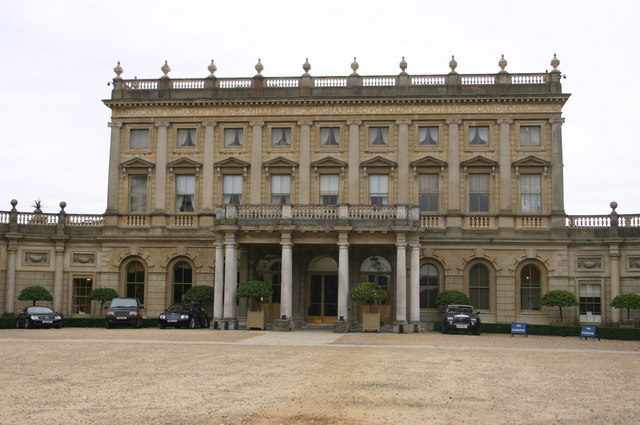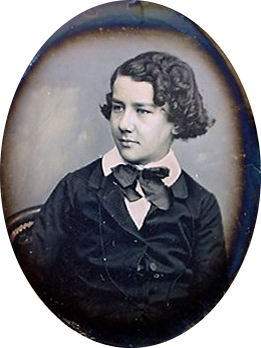|
Waldo Story
Thomas Waldo Story (December 9, 1854 – October 23, 1915) was an American sculptor, art critic, poet and literary editor, living for most of his life in Rome, Italy. Life Story was born in Paris in 1854 to the sculptor William Wetmore Story, son of early Supreme Court justice Joseph Story. While his parents lived in Rome, Waldo was educated in England at Eton College and at Christ Church, Oxford. Afterwards, he moved to Rome himself where he shared a studio with his father and, after the latter's death in 1895, took over his lease of an apartment in the Palazzo Barberini. In 1883 Waldo Story married Ada Maud Broadwood (1856-1932), the eldest child of Thomas Capel Broadwood and Mary Davidson Hennin. In 1912, he was married for a second time to opera singer Bessie Pickens Abott. Waldo Story frequently stayed in England where he was friends with James Abbott McNeill Whistler. He is best known for his ''Fountain of Love'' in the grounds of Cliveden, Buckinghamshire. ... [...More Info...] [...Related Items...] OR: [Wikipedia] [Google] [Baidu] |
Paris
Paris () is the capital and most populous city of France, with an estimated population of 2,165,423 residents in 2019 in an area of more than 105 km² (41 sq mi), making it the 30th most densely populated city in the world in 2020. Since the 17th century, Paris has been one of the world's major centres of finance, diplomacy, commerce, fashion, gastronomy, and science. For its leading role in the arts and sciences, as well as its very early system of street lighting, in the 19th century it became known as "the City of Light". Like London, prior to the Second World War, it was also sometimes called the capital of the world. The City of Paris is the centre of the Île-de-France region, or Paris Region, with an estimated population of 12,262,544 in 2019, or about 19% of the population of France, making the region France's primate city. The Paris Region had a GDP of €739 billion ($743 billion) in 2019, which is the highest in Europe. According to the Economist Intelli ... [...More Info...] [...Related Items...] OR: [Wikipedia] [Google] [Baidu] |
Burkat Shudi
Burkat Shudi (variants: Burkhart, Burkhardt, Schudi, Tschudi, Tshudi) (13 March 1702 – 19 August 1773) was an English harpsichord maker of Swiss origin. Biography He was born in Schwanden in the Canton of Glarus, and arrived in England in 1718, where he started work as a joiner. He married Catherine Wild, whose parents came from the same town as him, in 1728. John Broadwood worked for him from 1761, and in 1769 became his partner after marrying his daughter Barbara. Johannes Zumpe also worked for him. He retired in 1771, being succeeded by his son, who was also called Burkat (c.1738–1803), following whose death the firm was taken over entirely by Broadwood, who had by then become a piano maker. There are twenty-three harpsichords by Shudi and 27 by Shudi and Broadwood in existence today. Three harpsichords exist by his nephew Joshua, who worked for him unsatisfactorily for a while, and one signed 'Bernard Shudi', about whom nothing is known. Shudi's harpsichords His ha ... [...More Info...] [...Related Items...] OR: [Wikipedia] [Google] [Baidu] |
19th-century American Sculptors
The 19th (nineteenth) century began on 1 January 1801 ( MDCCCI), and ended on 31 December 1900 ( MCM). The 19th century was the ninth century of the 2nd millennium. The 19th century was characterized by vast social upheaval. Slavery was abolished in much of Europe and the Americas. The First Industrial Revolution, though it began in the late 18th century, expanding beyond its British homeland for the first time during this century, particularly remaking the economies and societies of the Low Countries, the Rhineland, Northern Italy, and the Northeastern United States. A few decades later, the Second Industrial Revolution led to ever more massive urbanization and much higher levels of productivity, profit, and prosperity, a pattern that continued into the 20th century. The Islamic gunpowder empires fell into decline and European imperialism brought much of South Asia, Southeast Asia, and almost all of Africa under colonial rule. It was also marked by the collapse of the large S ... [...More Info...] [...Related Items...] OR: [Wikipedia] [Google] [Baidu] |
Literary Editors
Literature is any collection of written work, but it is also used more narrowly for writings specifically considered to be an art form, especially prose fiction, drama, and poetry. In recent centuries, the definition has expanded to include oral literature, much of which has been transcribed. Literature is a method of recording, preserving, and transmitting knowledge and entertainment, and can also have a social, psychological, spiritual, or political role. Literature, as an art form, can also include works in various non-fiction genres, such as biography, diaries, memoir, letters, and the essay. Within its broad definition, literature includes non-fictional books, articles or other printed information on a particular subject.''OED'' Etymologically, the term derives from Latin ''literatura/litteratura'' "learning, a writing, grammar," originally "writing formed with letters," from ''litera/littera'' "letter". In spite of this, the term has also been applied to sp ... [...More Info...] [...Related Items...] OR: [Wikipedia] [Google] [Baidu] |
1915 Deaths
Events Below, the events of World War I have the "WWI" prefix. January *January – British physicist Sir Joseph Larmor publishes his observations on "The Influence of Local Atmospheric Cooling on Astronomical Refraction". *January 1 ** WWI: British Royal Navy battleship HMS ''Formidable'' is sunk off Lyme Regis, Dorset, England, by an Imperial German Navy U-boat, with the loss of 547 crew. ** Battle of Broken Hill: A train ambush near Broken Hill, New South Wales, Australia, is carried out by two men (claiming to be in support of the Ottoman Empire) who are killed, together with 4 civilians. * January 5 – Joseph E. Carberry sets an altitude record of , carrying Capt. Benjamin Delahauf Foulois as a passenger, in a fixed-wing aircraft. * January 12 ** The United States House of Representatives rejects a proposal to give women the right to vote. ** '' A Fool There Was'' premières in the United States, starring Theda Bara as a ''femme fatale''; she quickly becomes one o ... [...More Info...] [...Related Items...] OR: [Wikipedia] [Google] [Baidu] |
1855 Births
Events January–March * January 1 – Ottawa, Ontario, is incorporated as a city. * January 5 – Ramón Castilla begins his third term as President of Peru. * January 23 ** The first bridge over the Mississippi River opens in modern-day Minneapolis, a predecessor of the Father Louis Hennepin Bridge. ** The 8.2–8.3 Wairarapa earthquake claims between five and nine lives near the Cook Strait area of New Zealand. * January 26 – The Point No Point Treaty is signed in the Washington Territory. * January 27 – The Panama Railway becomes the first railroad to connect the Atlantic and Pacific Oceans. * January 29 – Lord Aberdeen resigns as Prime Minister of the United Kingdom, over the management of the Crimean War. * February 5 – Lord Palmerston becomes Prime Minister of the United Kingdom. * February 11 – Kassa Hailu is crowned Tewodros II, Emperor of Ethiopia. * February 12 – Michigan State University (the "pioneer" l ... [...More Info...] [...Related Items...] OR: [Wikipedia] [Google] [Baidu] |
John Singer Sargent
John Singer Sargent (; January 12, 1856 – April 14, 1925) was an American expatriate artist, considered the "leading portrait painter of his generation" for his evocations of Edwardian-era luxury. He created roughly 900 oil paintings and more than 2,000 watercolors, as well as countless sketches and charcoal drawings. His ''oeuvre'' documents worldwide travel, from Venice to the Tyrol, Corfu, Spain, the Middle East, Montana, Maine, and Florida. Born in Florence to American parents, he was trained in Paris before moving to London, living most of his life in Europe. He enjoyed international acclaim as a portrait painter. An early submission to the Paris Salon in the 1880s, his ''Portrait of Madame X'', was intended to consolidate his position as a society painter in Paris, but instead resulted in scandal. During the next year following the scandal, Sargent departed for England where he continued a successful career as a portrait artist. From the beginning, Sargent's work is ch ... [...More Info...] [...Related Items...] OR: [Wikipedia] [Google] [Baidu] |
Buckinghamshire
Buckinghamshire (), abbreviated Bucks, is a ceremonial county in South East England that borders Greater London to the south-east, Berkshire to the south, Oxfordshire to the west, Northamptonshire to the north, Bedfordshire to the north-east and Hertfordshire to the east. Buckinghamshire is one of the Home Counties, the counties of England that surround Greater London. Towns such as High Wycombe, Amersham, Chesham and the Chalfonts in the east and southeast of the county are parts of the London commuter belt, forming some of the most densely populated parts of the county, with some even being served by the London Underground. Development in this region is restricted by the Metropolitan Green Belt. The county's largest settlement and only city is Milton Keynes in the northeast, which with the surrounding area is administered by Milton Keynes City Council as a unitary authority separately to the rest of Buckinghamshire. The remainder of the county is administered by Buck ... [...More Info...] [...Related Items...] OR: [Wikipedia] [Google] [Baidu] |
Cliveden
Cliveden (pronounced ) is an English country house and estate in the care of the National Trust in Buckinghamshire, on the border with Berkshire. The Italianate mansion, also known as Cliveden House, crowns an outlying ridge of the Chiltern Hills close to the South Bucks villages of Burnham and Taplow. The main house sits above the banks of the River Thames, and its grounds slope down to the river. There have been three houses on this site: the first, built in 1666, burned down in 1795 and the second house (1824) was also destroyed by fire, in 1849. The present Grade I listed house was built in 1851 by the architect Charles Barry for the 2nd Duke of Sutherland. Cliveden has been the home to a Prince of Wales, two Dukes, an Earl, and finally the Viscounts Astor. As the home of Nancy Astor, wife of the 2nd Viscount Astor, Cliveden was the meeting place of the Cliveden Set of the 1920s and 30s—a group of political intellectuals. Later, during the early 1960s when it was t ... [...More Info...] [...Related Items...] OR: [Wikipedia] [Google] [Baidu] |
James Abbott McNeill Whistler
James Abbott McNeill Whistler (; July 10, 1834July 17, 1903) was an American painter active during the American Gilded Age and based primarily in the United Kingdom. He eschewed sentimentality and moral allusion in painting and was a leading proponent of the credo "art for art's sake". His signature for his paintings took the shape of a stylized butterfly possessing a long stinger for a tail. The symbol combined both aspects of his personality: his art is marked by a subtle delicacy, while his public persona was combative. He found a parallel between painting and music, and entitled many of his paintings "arrangements", "harmonies", and "nocturnes", emphasizing the primacy of tonal harmony. His most famous painting, ''Arrangement in Grey and Black No. 1'' (1871), commonly known as ''Whistler's Mother'', is a revered and often parodied portrait of motherhood. Whistler influenced the art world and the broader culture of his time with his theories and his friendships with other lea ... [...More Info...] [...Related Items...] OR: [Wikipedia] [Google] [Baidu] |







